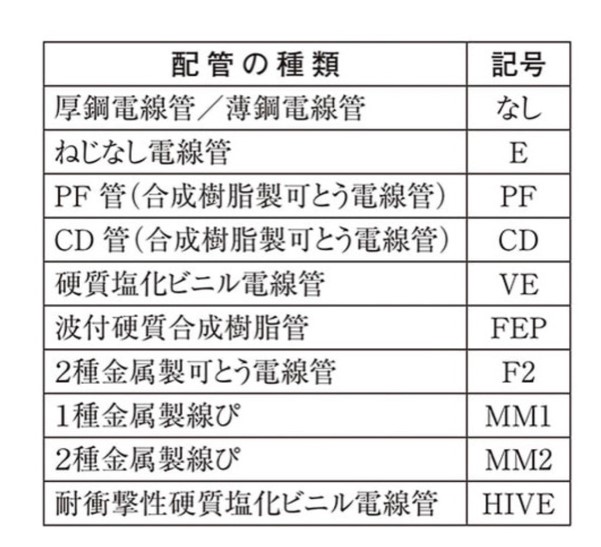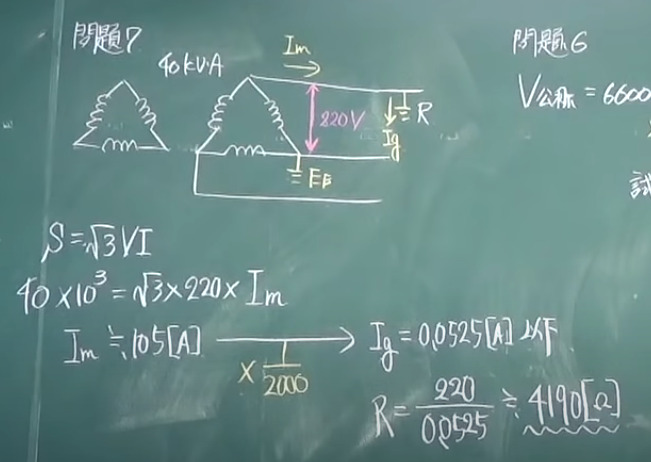比較
多くの人は、日常生活で電気の数値に触れることはない。そのため、ビットコインのエネルギーフットプリントを正しく理解することは難しいかもしれません。このページの目的は、ビットコインの電力消費を他の電力使用と比較することで、多様なオーディエンスにとってより具体的かつ有意義なものにすることです。
しかし、訪問者は、すべての比較は3つの主要な限界に直面していることに注意する必要があります。
1. リンゴとオレンジ
ビットコインのように、単純に比較できるものはありません。ある人は、ビットコインをカウンターパーティーのない合成商品の新しい価値貯蔵と考え、ある人は、パーミッションレスで検閲のない方法で支払いと決済の両方の機能を可能にする根本的な価値移転システムを賞賛し、さらに他の人は、その改ざん防止公開台帳によって可能になる無謬の公証機能に主に惹かれます。その結果、表面的には類似しているように見える他の活動と直接比較することは、部分的な-したがって必然的に不完全な-全体像を提供することしかできないのです。
2. 2.限られたデータの利用
多くの産業・家庭活動のエネルギーフットプリントについて、信頼できる電力数値を見つけることは驚くほど困難である。データセットは標準化されていないことが多く、異なる利益を追求する様々な利害関係者によって作成または維持され、大きく異なる方法論と仮定を使用する独特の理論モデルに基づいており、かつ/または特定の地理的地域や期間に限定されています。このため、同じ活動でも相反する推計がなされ、互いに対照的な結果になることがある。
3. 発表者の偏り
比較は主観的になりがちで、比較対象によって数値が小さく見えたり大きく見えたりする。追加の文脈がなければ、疑うことを知らない読者は、実際の大きさや規模を過小評価したり過大評価したりする特定の結論に引き込まれてしまうかもしれません。例えば、ビットコインの電力消費量を人口数百万人の国全体の年間フットプリントと対比させると、ビットコインのエネルギー消費量が制御不能になる懸念が生じます。しかし、先進国のある都市や都市圏が同じようなレベルで運営されていることを知れば、こうした懸念は少なくともある程度は軽減されるかもしれない。しかし、実際には、信頼できる比較対象データセットを見つけることが困難なため、このようなバランスのとれたアプローチは現実的でないことが多い。
注:以下の比較はすべて、我々の最善の推測に基づくものである。また、これらの比較は説明のためのものであり、推奨やその他の価値判断を意味するものではありません。私たちは、このページを継続的に更新し、適切な比較対象を掲載することを目指します。これは、継続的な反復プロセスです。新しい比較対象や信頼できるデータソースについてのご意見、ご感想、ご提案はいつでも受け付けております。
Total World Production & Consumption
First, we consider Bitcoin’s share of the world’s total yearly electricity production and consumption. A reference to global energy production and consumption has been added as well to account for the wide array of industries that primarily rely on sources other than electricity (e.g. diesel fuel). In a similar fashion, some Bitcoin mining facilities are known to directly tap into energy assets at the production point rather than procuring electricity via the regular grid.
*Electricity is generated by transforming primary energy sources into electrical power. A significant share of the input energy is lost during this conversion process, with the exact proportion depending on fuel type and power plant efficiency. For simplicity, we assume an average conversion loss of 61% based on a 2020 study by the US Energy Information Administration (EIA) on the 2019 US electricity flow.
Sources
International Energy Agency, World Energy Balances (2020), 2018 est.
International Energy Agency, Key World Energy Statistics (2020), 2018 est.
International Energy Agency, Electricity Information (2020), 2018 est.
Industrial & Residential
Next, we set up Bitcoin mining against other industrial and residential uses of electricity (or energy, depending on the nature of the activity).
Bitcoin’s closest and most referenced real-world analogue is gold. While they arguably share utilitarian similarities as stores of value, gold and Bitcoin also demonstrate common consumptive traits, (e.g. the proportional relationship between unit price and increased production resulting in increased resource consumption).
Source
Mudd, G., Global trends in gold mining: Towards quantifying environmental and resource sustainability (2007), 2019 est. based on own calculations
Note: energy intensity estimates of gold mining on a global scale are difficult to verify and can vary considerably. This figure is based on an older estimate from 2006 which may not be representative of the state of the gold mining industry today. It nevertheless provides a useful input for modelling a simple baseline scenario that assumes little infrastructural upgrades in gold mines over the last decade.
As the set of suitable comparisons with qualitatively similar activities is very limited, we now turn to other uses that have less – or indeed very little – in common with Bitcoin other than being energy-intensive in their own right. These comparisons should thus be considered from a quantitative rather than qualitative viewpoint. We distinguish between industrial (raw material production) and residential uses (appliance or equipment utilisation).
Unlike other industries, Bitcoin mining is relatively mobile. In their quest for cheap and abundant energy sources, miners can set up new facilities fairly quickly all over the world, including the most remote areas (in fact, you can visually track these seasonal mining migrations with our mining map). As a result, Bitcoin miners can tap into so-called ‘stranded’ energy assets that cannot easily be put to productive use by other industries. In those cases, Bitcoin miners are not competing with other industries or residential users for the same resources, but instead soaking up surplus energy that would otherwise have been lost or wasted.
Instances of this ‘non-rival’ approach has been observed, among others, with renewables curtailment in China (primarily hydro as a result of excess capacity during the wet season) as well as gas flaring in North America (turning natural gas from an undesirable by-product of oil extraction into a valuable commodity).
世界の総生産量と総消費量
まず、世界の年間電力生産量と消費量の合計に占めるビットコインの割合について考察する。電力以外のエネルギー源(ディーゼル燃料など)に主に依存するさまざまな産業を考慮し、世界のエネルギー生産と消費への言及も追加した。同様に、一部のビットコインマイニング施設は、通常の送電網を経由して電気を調達するのではなく、生産地点でエネルギー資産を直接利用することが知られています。
*電気は、一次エネルギー源を電力に変換することで生成されます。電気は、一次エネルギー源を電力に変換して生成されます。この変換プロセスで入力エネルギーの大部分が失われ、その正確な割合は燃料の種類と発電所の効率に依存します。簡単のため、米国エネルギー情報局(EIA)による2019年の米国の電力フローに関する2020年の調査に基づき、平均61%の変換ロスを想定しています。
出典
国際エネルギー機関、世界エネルギー収支(2020)、2018年推定。
国際エネルギー機関、世界の主要なエネルギー統計(2020年)、2018年推定。
国際エネルギー機関、電力情報(2020年)、2018年推定。
産業用・住宅用
次に、ビットコインマイニングと他の産業用および家庭用の電気(活動の性質によってはエネルギー)の使用との比較を設定しました。
ビットコインに最も近く、最も参照される実世界の類似品は金です。価値の貯蔵物としての実用的な類似性は間違いなくありますが、金とビットコインは共通の消費的特性も示しています(例えば、単価と生産量の増加による資源消費の増加の間の比例関係など)。
出典
Mudd, G., Global trends in gold mining: Towards quantifying environmental and resource sustainability (2007), 2019 estimate based on own calculations.
注:世界規模での金採掘のエネルギー原単位の推定は検証が困難であり、大きく変動する可能性があります。この数字は2006年の古い推定値に基づいており、今日の金採掘産業の状態を代表していない可能性がある。しかし、この数字は、過去10年間に金鉱のインフラがほとんど改善されなかったと仮定した単純なベースラインシナリオをモデル化するための有用な情報を提供する。
質的に類似した活動との適切な比較対象が非常に限られているため、ビットコインとの共通点が、それ自体エネルギー集約的であること以外にはあまりない、あるいはほとんどない他の用途に目を向けることにする。したがって、これらの比較は質的な観点よりも量的な観点から検討する必要がある。ここでは、産業用(原材料の生産)と家庭用(家電や機器の利用)を区別しています。
他の産業とは異なり、ビットコインの採掘は比較的移動が多い。安価で豊富なエネルギー源を求めて、採掘業者は遠隔地を含む世界中に新しい施設をかなり迅速に設置することができます(実際、当社の採掘マップを使用すれば、こうした季節ごとの採掘の移動を視覚的に追跡することができます)。その結果、ビットコインの採掘者は、他の産業では容易に生産的利用ができない、いわゆる「座礁」したエネルギー資産を利用することができます。このような場合、ビットコインマイナーは他の産業や家庭用ユーザーと同じ資源を巡って競争するのではなく、他の方法では失われたり無駄になったりするはずの余剰エネルギーを吸収しているのです。
この「非競合的」なアプローチの例としては、中国における自然エネルギーの抑制(主に雨季の余剰生産能力による水力)や、北米におけるガスフレアリング(石油採掘の副産物である天然ガスを価値ある商品へと変えること)などが挙げられます。
Country Ranking
Country comparisons are, for better or for worse, the most common type of comparison. They are frequently used in the public debate to support positions of concern about the scale of Bitcoin’s electricity consumption.
Source
U.S. Energy Information Administration, Country Data, 2019 est. (or most recent available year)
However, as indicated by the chart below, country comparisons without additional context provide only limited insight given the huge disparities between nations. The size of a country, both in geographical and population terms, does not always correlate with energy usage. Instead, the energy profile of each country is a unique product of factors such as the energy demand of domestic industries and residents, the level of economic and social development, the stock of available energy sources, economic spending and production patterns, strategic policy actions to attract or outsource energy-intensive industries, and many more. As a result, it should not be surprising that the energy footprint of a single large city in a developed country can match the total level of an emerging economy.
Fun Facts
We would like to end this brief excursion on a more amusing note, with a wink to our parent institution and a dearly held British tradition.
Did you know that the amount of electricity consumed by the Bitcoin network in a single year…
Sources
University of Cambridge, Facts & Figures | Sustainability (2021), 2017/18 est.
Drysdale, B. et al, Flexible demand in the GB domestic electricity sector in 2030 (2015), 2012 est.
国別ランキング
国別比較は、良くも悪くも最も一般的な比較の一種である。ビットコインの電力消費の規模を懸念する立場を支持するために、公開討論で頻繁に使用されています。
出典
米国エネルギー情報局、国別データ、2019年推定。(または入手可能な直近の年)
しかし、下の図が示すように、国家間の格差が非常に大きいため、追加的な背景を持たない国別比較では、限られた知見しか得られません。地理的、人口的な国の大きさは、必ずしもエネルギー使用量と相関があるわけではありません。むしろ、各国のエネルギー事情は、国内産業や住民のエネルギー需要、経済・社会発展の度合い、利用可能なエネルギー源のストック、経済支出や生産パターン、エネルギー集約型産業の誘致やアウトソーシングなどの戦略的政策など、さまざまな要因から生み出される独自のものなのである。その結果、先進国の一つの大都市のエネルギーフットプリントが、新興国経済の総量レベルに匹敵しても不思議ではない。
楽しい事実
最後に、親会社であるイギリスの伝統にちなんで、この小旅行を面白いものにしたいと思います。
ビットコインのネットワークが1年間に消費する電力量は...
情報源
ケンブリッジ大学、Facts & Figures|サステナビリティ(2021)、2017/18 est.
Drysdale, B. et al, Flexible demand in the GB domestic electricity sector in 2030 (2015), 2012 est.





